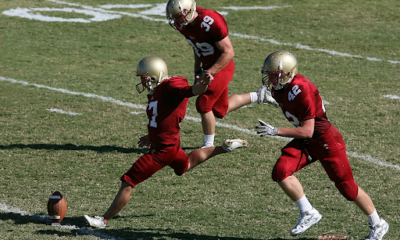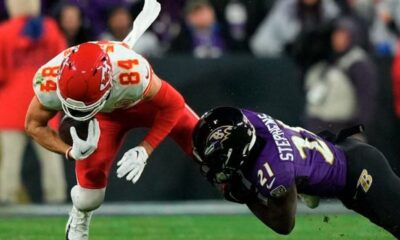
The United States Football League (USFL) has long been a haven for innovative coaching strategies and groundbreaking tactics. Despite its relatively short lifespan in the 1980s and its recent resurgence, the league has made a significant impact on the landscape of American Pro Football. This article delves into the coaching strategies and innovations that have defined the USFL, offering insights into how these tactics have influenced the broader world of football.
The Origins of USFL Coaching Strategies
The USFL was founded in 1982, aiming to provide an alternative to the NFL by offering spring football. From the outset, USFL coaches embraced a spirit of innovation, leveraging their relative freedom from the conservative approaches that dominated the NFL. This willingness to experiment was evident in both offensive and defensive strategies, as well as in special teams play.
Offensive Innovations
1. The Run-and-Shoot Offense
One of the most significant offensive innovations to come out of the USFL was the widespread adoption of the run-and-shoot offense. This offensive scheme, popularized by coaches like Mouse Davis, emphasized a high-octane passing attack that spread the defense thin. The formation typically featured four wide receivers and one running back, creating mismatches and exploiting open spaces in the defense.
The run-and-shoot offense’s success in the USFL had a ripple effect across all levels of football. It paved the way for more pass-heavy strategies in the NFL and influenced college football programs to adopt similar approaches. Teams like the Houston Gamblers, with quarterback Jim Kelly at the helm, demonstrated the potency of this offense by setting numerous passing records.
2. Play Action and RPOs
USFL coaches were early adopters of play-action passes and run-pass options (RPOs). These tactics kept defenses guessing and forced them to play honestly against both the run and the pass. Play-action passes, which involve faking a handoff to the running back before throwing the ball, became a staple in many USFL playbooks. This approach was particularly effective because it capitalized on the defense’s tendency to bite on run fakes, opening up passing lanes downfield.
RPOs, which give the quarterback the trusted online casino malaysia option to hand the ball off, keep it, or pass it based on the defensive alignment, added another layer of complexity to the USFL’s offensive strategies. These tactics have since become integral to modern football at all levels.
Defensive Strategies
1. Blitz Packages
USFL defenses were known for their aggressive blitz packages. Coaches like Jim Mora, who led the Philadelphia/Baltimore Stars to multiple championships, were masters at designing complex blitz schemes that overwhelmed opposing offenses. By sending extra defenders to rush the quarterback, USFL defenses forced quick decisions and created opportunities for turnovers.
These blitz-heavy approaches pressured offensive lines and quarterbacks, leading to numerous sacks and hurried throws. The success of these strategies in the USFL demonstrated the effectiveness of aggressive defensive play-calling, influencing NFL teams to incorporate more varied and frequent blitzes into their game plans.
2. Zone Coverage
While man-to-man coverage was the norm in the NFL during the early 1980s, USFL coaches were pioneers in implementing zone coverage schemes. Zone coverage involves defenders guarding specific areas of the field rather than individual players, which can be particularly effective against the pass-heavy offenses that were prevalent in the USFL.
Coaches like Marv Levy, who led the Chicago Blitz and the Kansas City Chiefs, utilized zone coverage to stifle opposing passing attacks. By disguising their coverages and mixing in zone blitzes, USFL defenses confused quarterbacks and forced them into making mistakes.
Special Teams Innovations
Special teams play is often overlooked, but it was an area where USFL coaches also made significant strides. Innovations in kickoff and punt coverage, as well as return strategies, provided teams with a competitive edge.
1. Kickoff and Punt Coverage
USFL coaches paid meticulous attention to kickoff and punt coverage, recognizing the importance of winning the field position battle. Teams employed directional kicking, where the kicker aimed to place the ball in specific areas of the field to limit the returner’s options. Gunners, the players responsible for getting downfield quickly to tackle the returner, were given specialized training and assignments to disrupt returns.
2. Return Strategies
On the return side, USFL coaches experimented with different formations and blocking schemes to create lanes for returners. They also emphasized the importance of having a dynamic return specialist who could change the game’s momentum with a single play. These innovations in special teams play have since been adopted by NFL teams, underscoring the USFL’s lasting impact on the sport.
Player Development and Utilization
USFL coaches were known for their ability to identify and develop talent, often giving opportunities to players who had been overlooked by the NFL. This focus on player development was instrumental in the league’s success and contributed to its reputation as a breeding ground for future NFL stars.
1. Quarterback Development
The USFL was particularly effective in developing quarterbacks, many of whom went on to have successful careers in the NFL. Coaches invested time in refining their quarterbacks’ mechanics, decision-making, and leadership skills. This emphasis on quarterback development paid dividends, as evidenced by the success of players like Jim Kelly, Steve Young, and Doug Williams, who all played in the USFL before making their mark in the NFL.
2. Versatile Athletes
USFL coaches also valued versatility, often utilizing players in multiple roles to maximize their impact on the game. This approach allowed coaches to exploit mismatches and keep defenses off balance. For example, running backs who could catch passes out of the backfield were highly prized, as they added another dimension to the offense. Similarly, defensive players who could play multiple positions provided flexibility in scheme design and game planning.
Adaptation and Resilience
One of the defining characteristics of USFL coaching strategies was the ability to adapt and evolve. Coaches in the USFL were often faced with unique challenges, such as limited resources and the need to compete with the NFL for talent. These challenges fostered a culture of creativity and resilience, as coaches were forced to think outside the box and find innovative solutions.
1. Adapting to Rule Changes
The USFL implemented several rule changes designed to make the game more exciting for fans. Coaches had to quickly adapt to these changes, adjusting their strategies and tactics accordingly. For example, the USFL’s adoption of the two-point conversion added a new strategic element to the game, as coaches had to decide whether to attempt a two-point conversion or settle for an extra point.
2. Overcoming Adversity
USFL coaches often faced adversity, whether it was financial instability, player injuries, or other challenges. Their ability to overcome these obstacles and keep their teams focused and motivated was a testament to their leadership and ingenuity. This resilience was a key factor in the league’s ability to produce high-quality football despite its relatively short existence.
Conclusion
The coaching strategies and innovations of the USFL have had a profound and lasting impact on American Pro Football. From offensive schemes like the run-and-shoot to defensive tactics and special teams excellence, the USFL was a breeding ground for creativity and ingenuity. The league’s ability to develop talent, adapt to challenges, and push the boundaries of traditional football strategy has left an indelible mark on the sport.









